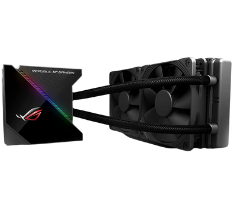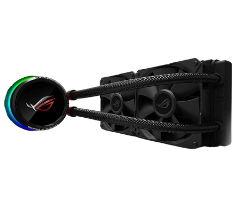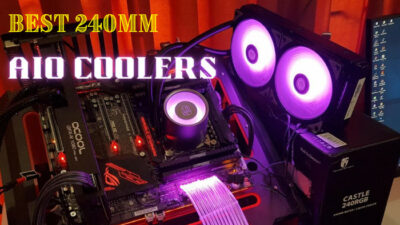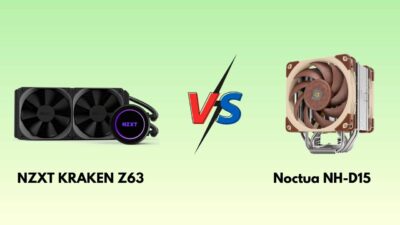ASUS has been one of the most prominent players in the PC gaming market for quite a time now. Their ROG series of products are a hell of options when it comes to top-notch functionality.
That said, both the ASUS ROG Ryujin and the ROG Ryuo are terrific cooling solutions.
In this post, I’ll be taking on the 240 mm version of both AIO cooling solutions. And by the end of this post, you’ll be able to figure out the better one between these two.
Therefore, let’s not waste any time and jump right into the discussion.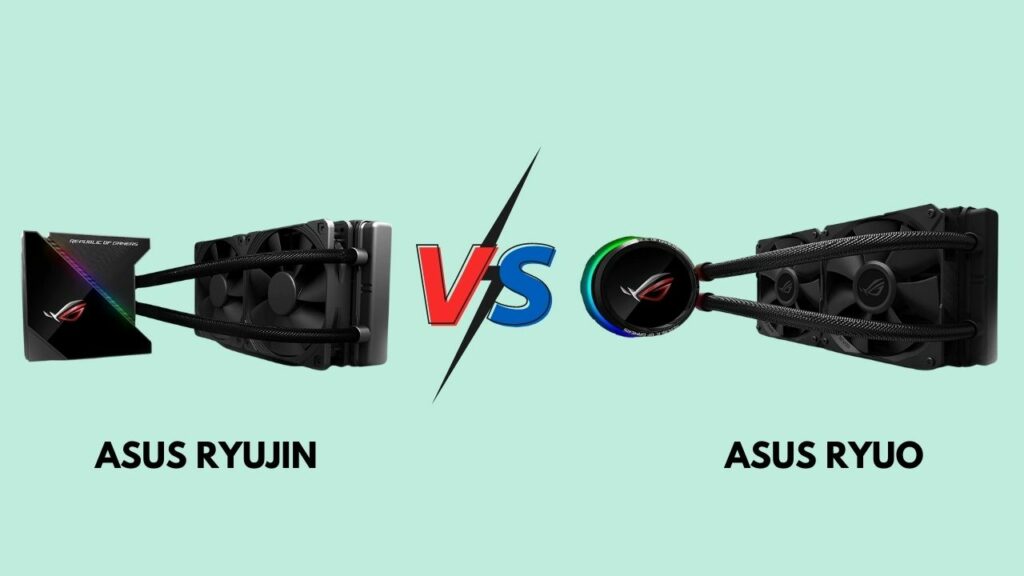
Is ASUS ROG Ryujin better than ASUS ROG Ryou?
Now, this is a serious question to ask. Between the ROG Ryujin and the ROG Ryou, you have to choose one, and determining the better one between them can get a bit tricky.
But worry not, as I have pointed out some crucial factors to consider.
Here are the four major differences between ASUS Ryujin and ASUS Ryou CPU Cooler:
1. Design & Aesthetics
If you possess great taste in building gaming rigs, aesthetics must be one of your prime concerns.
Gaming rigs that are aesthetically pleasing look eloquent. On such rigs, everything looks consistent. That said, since a cooler is one of the main components of a system, it can also add tremendous value to the overall aesthetics of the rig.
Let’s now focus on the aesthetics of the two coolers that we are talking about.
The 240 mm version of both the ASUS ROG Ryujin and ASUS ROG Ryuo AIO coolers are almost similar. The main difference exists in the design of the pump face.
If I start with the ROG Ryujin, it has a pump face that looks unique to most other CPU coolers. It sports a 1.77” OLED display that shows RGB elements. Through this, you can view various system information, and also you can control it via the Aura Sync Software. So, Download Aura Sync Now.
Now, the ASUS ROG Ryou, it’s pretty much the same. The water block consists of a similar 1.77” OLED screen that you can control via ASUS aura sync. In it, you can customize animation and add images as per your likings.
But the pump face is round, unlike the one in ROG Ryujin.
For many, the water block of ROG Ryujin might be something uncommon. However, in my opinion, it looks a bit awful. And that’s why I prefer the design that ROG Ryuo has.
Nevertheless, the taste is subjective. You might end up liking the design of ROG Ryujin. Other than this, the blackish texture on both these coolers looks pretty cool.
2. Fans
Both these models sport 2x fans. But the difference is that the ASUS ROG Ryujin sports Noctua NF-F12 PWM fans, unlike the ASUS ROG Ryuo.
The fans from Noctua are the best in class. These fans come with a unique blade design and do a fine job in moving out the hot air out of the rig. You can choose either the 120mm or 140mm diameter fans.
Now, the Noctua NF-F12 fans are something that ensures greater airflow than the normal ones. As this fan is used in the ASUS ROG Ryujin AIO cooler, it has a maximum airflow of 121.8 CFM, which is almost 50% higher than that of the airflow in the ASUS ROG Ryuo.
Also, these fans consume much less power than the fans in the ASUS ROG Ryuo.
It consumes around 0.6W, which eventually makes it eco-friendly.
Overall, this fan plays a big part in the superior performance of the ASUS ROG Ryujin AIO cooler.
3. Noise Level
Sound or noise level obviously matters for most gamers. No one likes to hear something too loud coming out of their system.
That said, both the coolers we are discussing here do produce some noise at certain levels. Before that, let us look at the fan speeds as it is one of the most common noise sources.
In the ASUS ROG Ryujin, the fan generally runs at a speed of 1000-1500 RPM. But under load, it can go up to 2200 RPM, and at least it can run at 450 RPM. Whereas, in the ROG Ryou AIO cooler, the minimum and maximum speed range between 800-2700 RPM.
Now, the fan speeds somewhat contribute to the noise level. Due to the higher max speed in the ASUS ROG Ryuo AIO cooler, the noise level can go up to 40 dBA under loads. On the other hand, the ASUS ROG Ryujin is quieter in this regard. At max you the noise level can hit 30 dBA, which is almost 25% lesser than ROG Ryuo.
To completely strip down the noise, none of these coolers will make the cut. Rather, get the best fanless cooler.
4. Budget
When you are almost clear about everything, it all comes down to the price of the component. That said, your buying decision all depends on how much you are willing to spend.
If we look at the pricing of these AIO coolers, both of them come pretty much with a similar tag. Still, if you want to save a few bucks, I recommend you go for the ASUS ROG Ryou as it’s a tad cheaper than the ROG Ryujin AIO cooler.
FAQ
Question: Is ASUS ROG Ryujin a good AIO?
Answer: The ASUS ROG Ryujin 240 is a pretty awesome cooler that performs significantly lower noise levels. It looks okayish with RGB elements on the pump block, though the fans are non-RGB.
Question: Is ASUS ROG Ryujin a good deal or the ASUS ROG Ryuo?
Answer: If you are concerned about the price, then the ROG Ryou would be a better option to buy. Otherwise, the ROG Ryujin is worth the extra money you would be spending.
Final Thoughts
As I end up, I hope you are pretty clear about the critical differences between AIO cooling solutions. Nonetheless, both these coolers are terrific, in my opinion.
But since you have to choose a single one, you need to get your priorities right. And after reading this comparison guide, I hope you’ll be able to make the right decision.
Till then, goodbye, and if any query arises, do let me know in the comments.

